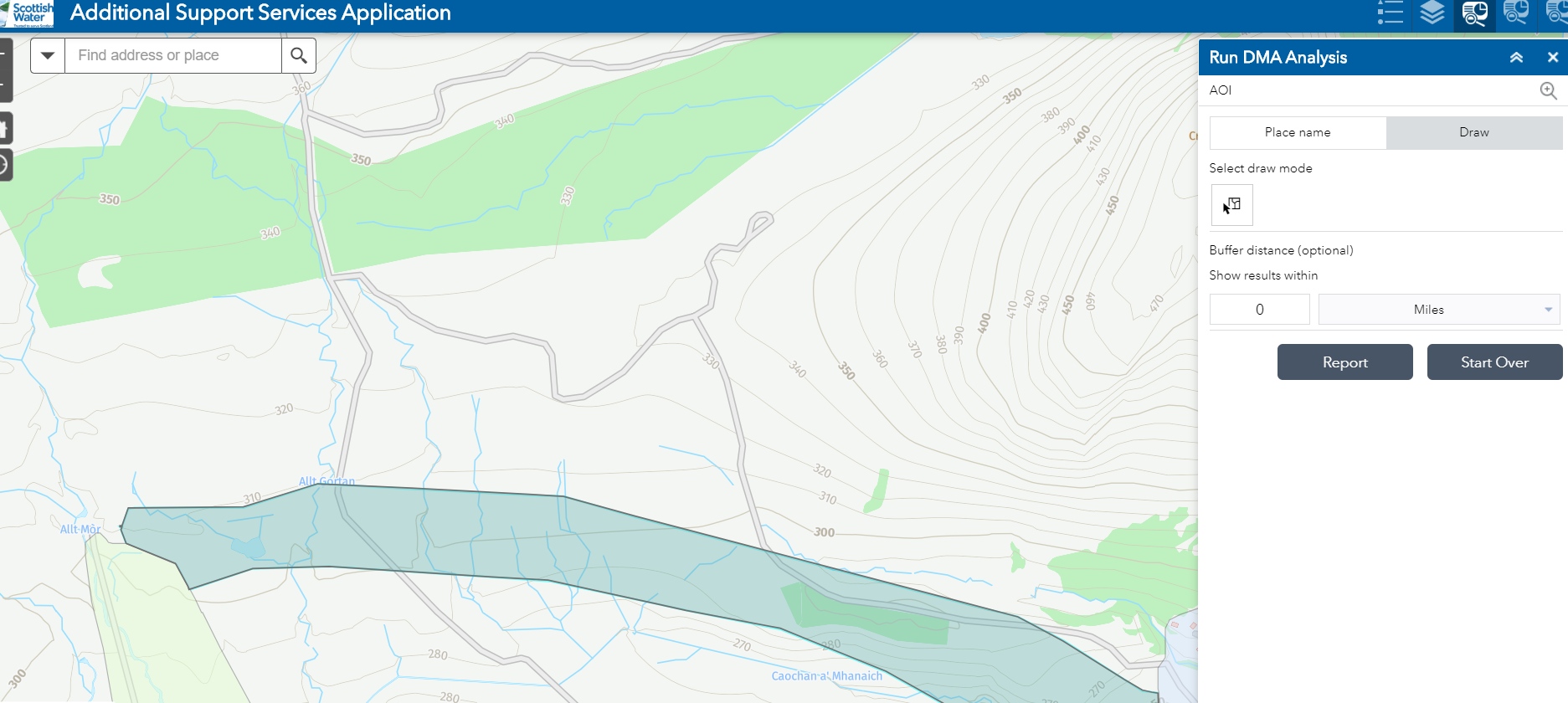Scottish Water is used to dealing rapidly with the unexpected. Pipes can burst and extreme weather events can occur at any time, with little or no notice, and the organisation needs to be able to respond quickly to help maintain the water supply, prevent pollution and safeguard natural resources. Critically, if a water outage occurs, Scottish Water has the ability to identify any vulnerable people who might be affected and, as fast as possible, deliver bottles or tanks of water to them as a priority.
Scottish Water knew that if the clean water supply were to be interrupted during the COVID-19 lockdown, it would be more important than ever to provide rapid support for vulnerable customers, such as people in care homes or hospitals and people who have registered as needing priority services. “In normal circumstances, vulnerable people can also call upon neighbours or family members until priority services can be provided, but when they are shielding themselves and self-isolating, this isn’t possible,” explains Stuart Hill, Asset Inventory Lead at Scottish Water. “We had to be ready to help our vulnerable customers much more quickly than normal if an emergency water outage were to occur during the COVID-19 lockdown.”
Scottish Water has tried and tested emergency procedures in place for all kinds of situations, but it was concerned that the speed of its emergency response could potentially be impeded during the lockdown period due to the need to comply with social distancing measures. Any response to a potential emergency might also be hampered by staff being in self-isolation and teams working from home. The organisation set up a COVID-19 Incident Team and began looking for ways to accelerate its emergency response process, so that if the worst did happen during the lockdown, it could continue to react quickly to support vulnerable people.
The lockdown had only just come into operation when Hill identified a solution to the challenge. He knew that it currently took the organisation around one and a half hours to put together lists of vulnerable customers affected by a water outage. Drawing on his long experience with GIS and knowledge of the Esri ArcGIS platform, he proposed a way to remove this administration time completely and give the Emergency Planning Team clear visibility of where vulnerable customers are located, in a matter of minutes. “The quicker we can understand the scale and where support is needed, the quicker Scottish Water can respond and ensure priority services for our vulnerable customers,” he says.
Having come up with the initial idea, Hill contacted Esri UK for help and within three hours a prototype solution had been built using standard tools within ArcGIS Online. Hill then liaised with directors and brought the right team of people from within Scottish Water together to turn the concept into a fully validated product within days that ensured the continued protection and privacy of data. The solution he designed is an analytical web app that enables users to highlight an area, such as a cluster of water supply zones or just a couple of streets, and immediately see the locations of vulnerable households, care homes, hospitals, prisons, schools and other vulnerable groups within this specified area. The web app can be used by anyone within the Emergency Planning Team, without the need for GIS experience, technical skills or training. “A process that used to take a GIS specialist well over an hour, can now be done in minutes by anyone with approved access,” Hill says.
The development of this app means that Scottish Water is now more prepared than ever to support vulnerable customers if a water outage occurs. “A water outage is not something you wish for, but it’s something you have to plan for,” Hill says. “Having this app will help us to compensate for the challenges of operating during lockdown and respond very quickly if the worst happens. It gives us a little speed advantage, helping us to deliver good customer service to the most vulnerable people, as fast as possible.”
Hill believes that his inspiration for the app came from seeing presentations at Esri UK conferences. He had previously seen demonstrations of a variety of ArcGIS web apps and dashboards, created by a range of organisations, across multiple industry sectors. While these solutions mostly related to business challenges that were very different from those faced by Scottish Water, Hill had the vision to see how these cutting-edge GIS solutions could be adapted and applied to the water industry.
Surprisingly perhaps, Hill doesn’t see himself as a ‘GIS person’. He has worked in the water industry, in clean water and waste water operations, for 28 years. With a background as a scientist, his career began in water testing laboratories and progressed from here into roles in data management, asset management, process optimisation and change management. He found himself using GIS for asset management and gradually developed both an expertise and a passion for the technology.
In 2016-17, Hill played a pivotal role in helping Scottish Water migrate from several legacy GIS systems to a single enterprise-wide GIS platform: ArcGIS. Since then, he has made it his personal mission to help Scottish Water optimise the use of this core system and he proactively seeks ways to introduce GIS into departments and business processes that haven’t previously used it. Through his involvement in a number of high-level business improvement groups, he regularly finds himself enthusing about the capabilities of ArcGIS and explaining the benefits to senior directors. “GIS is so much more than mapping,” he says, “and now it is getting much more airtime at a high level within Scottish Water.”
Long after the COVID-19 crisis has abated, Scottish Water will be gaining value from Hill’s inventiveness. The app that he devised will continue to maximise Scottish Water’s business agility and enable it to locate and support vulnerable people more quickly when unexpected water outages occur. Looking ahead, the organisation also plans to extend the use of the app and start using it for maintenance activities, to make sure vulnerable people get additional support during temporary, planned interruptions to services. As Hill rightly says, “The app may be small, but it has huge potential within the business.”

The ArcGIS app that helps Scottish Water identify vulnerable customers more quickly.

Stuart Hill - Scottish Water